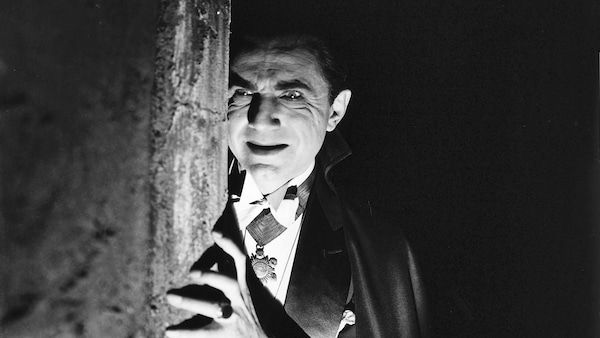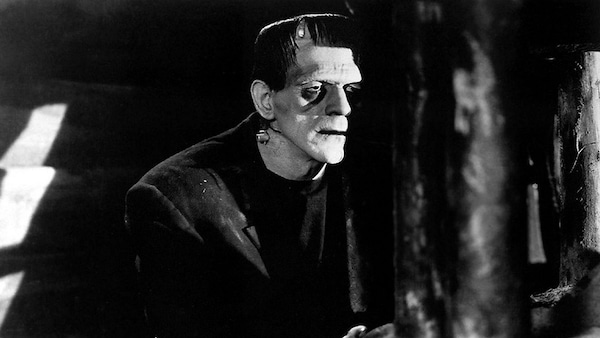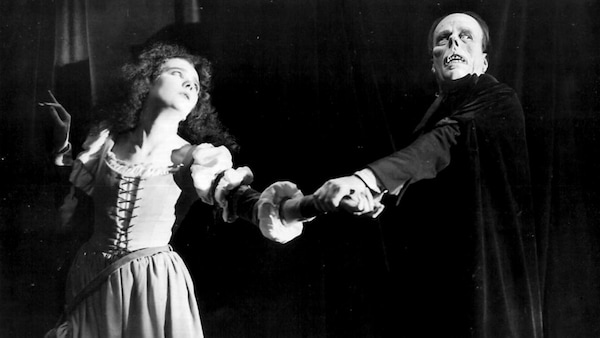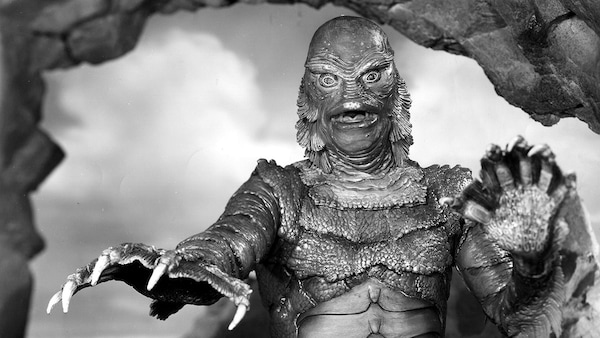Newsletter | Horror's Hall Of Fame: Dracula To The Mummy, These Monsters Are 'Universal'
This is #HouseOfHorrors, where Prahlad Srihari compiles the definitive guide on the modern production houses that comprise the genre's hall of fame.

Last Updated: 04.55 PM, Aug 30, 2023
This column was originally published as part of our newsletter The Daily Show on August 30, 2023. Subscribe here. (We're awesome about not spamming your inbox!)
***
This is OTTplay’s House Of Horrors, a guide to the contemporary production houses that have cemented their spots in the genre’s hall of fame. In part 9, we look at Universal. Also read the previous instalments on Atomic Monster , Blumhouse, A24, Platinum Dunes, IFC Midnight, Hammer Films, Ghost House Pictures and NEON.
What is Universal Pictures?
Of all the studios covered in this series, this one is without doubt the oldest and biggest. A name which really needs no introduction. Universal Pictures may not produce and distribute horror movies exclusively, but it has always been a heavyweight of the genre. Throughout the Golden Age of Hollywood, the industry and its pipeline were ruled by five studios: Metro Goldwyn Mayer (MGM), RKO, 20th Century Fox, Warner Bros, and Paramount Pictures. Universal was but a minor player. But it was one of the first to recognise the audiences’ appetite for a good scare. The studio’s legendary run of monster movies between the 1920s and 1950s shaped the genre as we know it.
Today, Universal is one of the Big Five. Though it doesn’t produce as many horror films as it may have in the past, it has emerged as a steadfast distribution partner to leading horror filmmakers (like Jordan Peele and M Night Shyamalan) and producers (like Jason Blum and James Wan).
What is Universal Pictures known for (in horror circles)?
Laying the groundwork for the institution of American horror cinema with a gallery of iconic monsters.

The idea of a genre movie grew out of the Hollywood studio system during the Golden Age. Each studio wanted to be associated with a niche that could build their brand identity and catch the audience’s eye in a crowded marketplace. Codified genres thus gave writers a blueprint to churn out more pictures and distributors a readymade strategy to sell them. MGM was known for its musicals. Warner Bros for its cycle of gangster movies. Universal decided to trade in horror. Plenty of ‘dreams’ were coming off the other studios’ assembly lines. So, Universal became the nightmare factory of Hollywood.
As early as the 1920s, Universal slowly began to shift its focus towards horror. Silent productions of The Hunchback of Notre Dame (1923) and The Phantom of the Opera (1925), anchored by the talents and macabre makeup of contract player Lon Chaney, had tickled the audiences’ fancy enough to become big hits. When the founder Carl Laemmle was succeeded by his son Carl Laemmle Jr in 1931, the project that came to be dubbed as Universal Classic Monsters took shape. The transition from silent films to talkies had changed how audiences reacted to the horrors on screen. Laemmle Jr. capitalised on this, starting with two literary adaptations, Dracula and Frankenstein, in 1931.
From there, Universal produced a string of hits: The Mummy (1932), The Invisible Man (1933), The Bride of Frankenstein (1935) and The Wolf Man (1941). When audiences started to lose interest in the 1940s, the studio mixed things up with ‘monster mash’ pictures like Ghost of Frankenstein (1942), Frankenstein Meets the Wolf Man (1943) and House of Frankenstein (1944). When audiences got bored of that, the studio mixed things up further by bringing in the comedy duo Abbott and Costello for a series of movies: Abbott and Costello meet Frankenstein (1948), Abbott and Costello Meet the Invisible Man (1951), Abbott and Costello Meet Dr. Jekyll and Mr. Hyde (1953), and Abbott and Costello Meet the Mummy (1955). Each cross-over was about as ill-advised as you might imagine. It wasn’t until Universal unchained itself from its gothic cycle that it tasted some success again with Creature from the Black Lagoon (1954), the last of its classic monster movies.

The next generation of filmmakers had grown up watching these movies on television. Steven Spielberg, for example, went on to direct a horror classic of his own for Universal. One can see the influence of Creature from the Black Lagoon on Jaws (1975), which also features a creature lurking underwater and sometimes submerges us in its POV. Over the years, Universal has continued to exhume and reanimate its classic monsters for the screen with mixed results. The Wolfman (2010) and The Mummy (2017) were the kind of ungainly miscreations you get when you try to reverse-engineer new life from existing parts, as Victor Frankenstein will tell you. The Invisible Man (2020), on the other hand, was an up-to-the minute reimagining which explored the horrors of domestic abuse.
As a distributor, Universal signed first-look deals with horror studios like Blumhouse and Atomic Monster. M Night Shyamalan’s stint with the company, which oversaw the release of The Visit, Split, Glass, Old and Knock at the Cabin, reinvigorated his career. Jordan Peele, who is arguably the most exciting American horror filmmaker right now, too has been able to count on Universal as distribution partner.
What are the hallmarks of Universal Pictures’ horror productions?
If people still dress up as Dracula, Frankenstein’s monster or the Mummy on Halloween, it’s a testament to their pop cultural staying power. It may be easy to dismiss the Universal’s monster movies as dated fossils. But don’t forget these movies pretty much set the ghoul standard for every vampire, man-playing-God, werewolf and gothic horror movie that continue to haunt our screens. With sound adding a whole new dimension and visuals inspired by German expressionist cinema, Universal practically wrote the first chapter of American horror movie history.

When Bela Lugosi announced himself “I am Drac-u-la” with that ominous slow drawl in Tod Browning’s 1931 interpretation of Bram Stoker’s gothic novel, audiences were by turns terrified and fascinated. Because the Count appeared more like a fanged seducer than some ghastly beast. Universal’s monsters may look sinister but there is also a sadness that seems to haunt them. Nowhere is this more apparent than in Boris Karloff’s take on the monster in James Whale’s Frankenstein (1931). While transforming Mary Shelley’s vision, Whale didn’t see him as a monster of course, but as a victim of scientific hubris. “It’s alive! It’s alive! In the name of God, now I know what it feels like to be God!” screams Colin Clive’s titular scientist upon bringing to life a man with a flat head and bolts through his neck. The lumbering giant cannot make sense of the world in which he has been conceived, as we see in a shocking scene where he throws a little girl into a lake thinking she will float like a flower. He longs for a mate who will love him, just as everyone. So, The Bride of Frankenstein (1935) gave him exactly that in the form of a shock-haired and hissing Elsa Lanchester. Only he doesn’t quite get a happily-ever-after.
In The Mummy (1932), Karloff took on the role of Imhotep, a high priest from ancient Egypt who is accidently revived by British archaeologists and then goes on to wreak havoc in his search for the reincarnation of his long-lost love. The Invisible Man (1933) introduced us to Claude Rains’ bandaged and mischievous doctor who embodies the unspeakable horrors man could commit if unshackled from being watched and judged. Lon Chaney Jr. captured the fractured interiority of a cursed man with an irrepressible monster living inside him in The Wolf Man (1941).
Moving away from its gothic monsters and towards sci-fi, Universal tapped into the Cold War and nuclear anxieties in the 1950s. A group of scientists believe a half-man, half-fish to be the missing link to humanity’s evolution in Creature from The Black Lagoon (1954). Beneath its environmental concerns is a simple beauty-and-the-beast tale about a misunderstood creature hoping love can transcend biology, not unlike Frankenstein’s monster. As mentioned, the movie was a key influence on Steven Spielberg’s proto-blockbuster Jaws — a masterpiece on building tension through a creature in the sea. Jordan Peele does the same for the sky in Nope. The monsters in Peele’s movies, be it insidious racism (Get Out), the guilt we bury deep (Us) or all-consuming spectacles (Nope), made for glorious additions to Universal’s stable. Horror movies have always been a vehicle for personal and cultural anxieties, especially for the marginalised. But to move these anxieties from the margins to the mainstream and push the larger public into confronting institutional evils takes a rare and special talent.

Who are the directors and actors most associated with the horror movies of Universal Pictures?
Bela Lugosi and Boris Karloff were the faces of Universal’s monster canon. Given their popularity, the two also appeared together in many movies, starting with The Black Cat in 1934. Lon Chaney, Claude Rains and Lon Chaney Jr too brought to life monsters who inspired nightmares aplenty. Directors like Tod Browning, James Whale, George Waggner, Karl Freund, Steven Spielberg, John Carpenter, John Landis, M Night Shyamalan and Jordan Peele have all made horror movies with Universal’s backing as producer and/or distributor.
Which are Universal Pictures’ essential horror movies?
In order of release: The Hunchback of Notre Dame (1923), The Phantom of the Opera (1925), Dracula (1931), Frankenstein (1931), The Mummy (1932), The Invisible Man (1933), The Bride of Frankenstein (1935), The Wolf Man (1934), Creature from the Black Lagoon (1954), Jaws (1975), The Thing* (1982), Tremors* (1990), The Strangers* (2008), Split* (2016) Get Out* (2017), Us* (2019), The Invisible Man* (2020), Nope (2022).
*only distributed, not produced, by Universal
